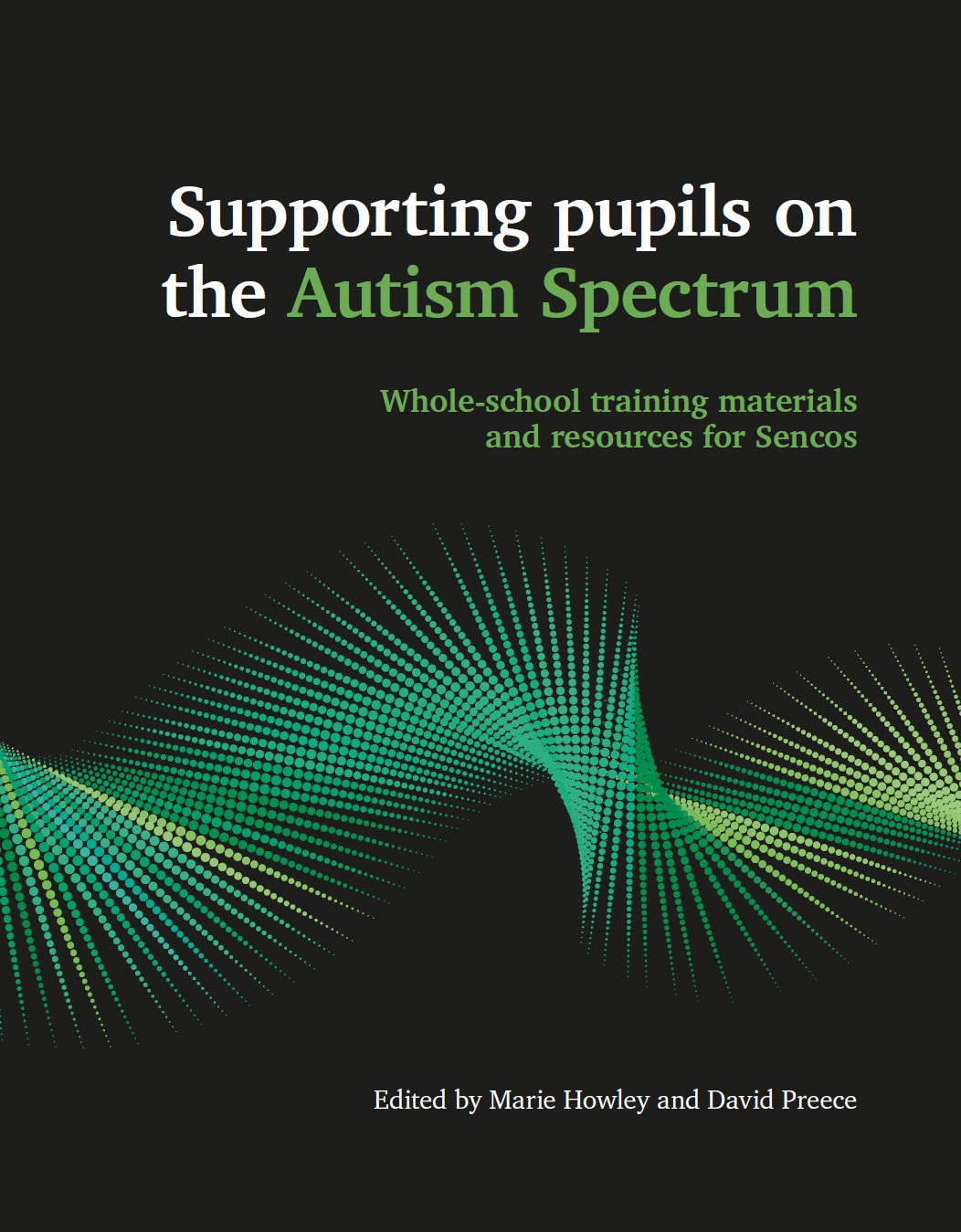- Latest NewsUp-to-date articles giving you information on best practice and policy changes.
- Model PoliciesA comprehensive set of templates for each statutory school policy and document.
- Skills AuditsEvaluate your skills and knowledge, identify gaps and determine training needs.
Bookshop

Supporting Pupils on the Autism Spectrum: Whole-school training materials and resources for Sencos
£149.00
Phase:
Primary, Secondary
ISBN:
978-1-907927-16-4
Published:
Feb 2013
Overview
‘Teachers tell us that understanding different types of SEN helps them to teach effectively and that more could be done to make specialist training available.’
Support and Aspiration: A new approach to special educational needs and disability, SEN green paper, March 2011
Pupils on the autistic spectrum have difficulties in common, but they are individuals and have specific abilities and needs. For them to succeed it is vital that they are understood and barriers to their learning removed.
Sample material
Benefits
Supporting Pupils on the Autism Spectrum will enable you to support your staff to:
- understand what it means for a pupil to be on the autism spectrum
- know how to devise individual programmes of support and monitor progress
- develop a ‘road-map’ for considering behaviour and planning positive responses to that behaviour
- adapt strategies that will enable pupils to access the curriculum
- establish networks of peer support
- appreciate that pupils on the autism spectrum and with Asperger syndrome should be treated as individuals with particular learning needs
- plan for transition of pupils from class to class, from school to school and finally on leaving school.
Summary of contents
Chapter 1: Understanding the Autism Spectrum
Provides an overview of the core difficulties characteristic of the autism spectrum and is directly relevant to the subsequent chapters.
Learning outcomes
Participants will:
- understand what being on the autism spectrum means for pupils
- be able to build a profile of each individual’s strengths and differences.
Chapter 2: Understanding the Perspectives of Children and Parents: a foundation for developing partnership
Considers individual perspectives and experiences of families in order to better understand how autism affects their lives.
Learning outcomes
Participants will:
- appreciate what parents want from school
- build partnerships with parents and families to better support pupils.
Chapter 3: Challenging Behaviour and the Autism Spectrum: Making sense of the problem
Presents a ‘roadmap’ for considering behaviour and planning positive responses to that behaviour.
Learning outcomes
Participants will:
- develop a framework to guide planning and implementing strategies for prevention and management
- make sense of the meaning of the behaviour as a key step in planning effective intervention.
Chapter 4: Challenging Behaviour and the Autism Spectrum: Prevention and management
Recognises the importance of prevention in managing behaviour.
Learning outcomes
Participants will:
- be able to make good use of preventative strategies
- know how to replace challenging behaviour through the development of skills and understanding and through promoting alternative behaviours.
Chapter 5: Structure
Exemplifies the need for structure to enhance the learning of pupils on the autism spectrum.
Learning outcomes
Participants will:
- know how to organise the physical space to provide structure
- be able to create individualised schedules, work systems and visual structure to support learning
Chapter 6: Curriculum Access
Demonstrates how you can adapt the curriculum to make it more accessible for pupils on the autism spectrum.
Learning outcomes
Participants will:
- be able to differentiate lesson objectives and content
- make best use of group work, support from teaching assistants,
- know how to manage tests and exams, and homework
Chapter 7: Peer Support
Considers ways to include peers as buddies, mentors and role models.
Learning outcomes
Participants will:
- appreciate the potential benefits of peer support to children and young people on the autism spectrum
- assess different ways of incorporating peer support and identify the best way forward
Chapter 8: Transitions without Tears
Explores a variety of positive strategies for supporting potentially difficult times of change.
Learning outcomes
Participants will:
- see the importance of planning the transition process
- use various tools and strategies to make transition less stressful for pupils.
Chapter 9: Selecting and Blending Strategies to Meet Individual Needs
Provides guidance on factors to consider when planning an eclectic mix of strategies, as no single approach will be effective if used in isolation.
Learning outcomes
Participants will:
- understand how to select and blend strategies
- know what to do when strategies ‘don’t work’.
Delivery
Books and training products: Titles in stock will be fulfilled within 15 working days. If you have pre-ordered a forthcoming title, you will receive it as soon as it is available.
eBooks and digital products: After making your order, you will shortly receive another email containing easy instructions on how to download your eBook(s) and digital products. To access, log in to your account and follow the instructions below:
- Go to your Dashboard in the top right hand corner
- Click 'Customise Dasboard'
- Drag the 'My eBooks' module down to your dashboard.
- Click 'Done'
You can now view and access all purchased ebooks from this block. If you can not see your order please email customer.services@optimus-education.com.
See more from...
Topics



